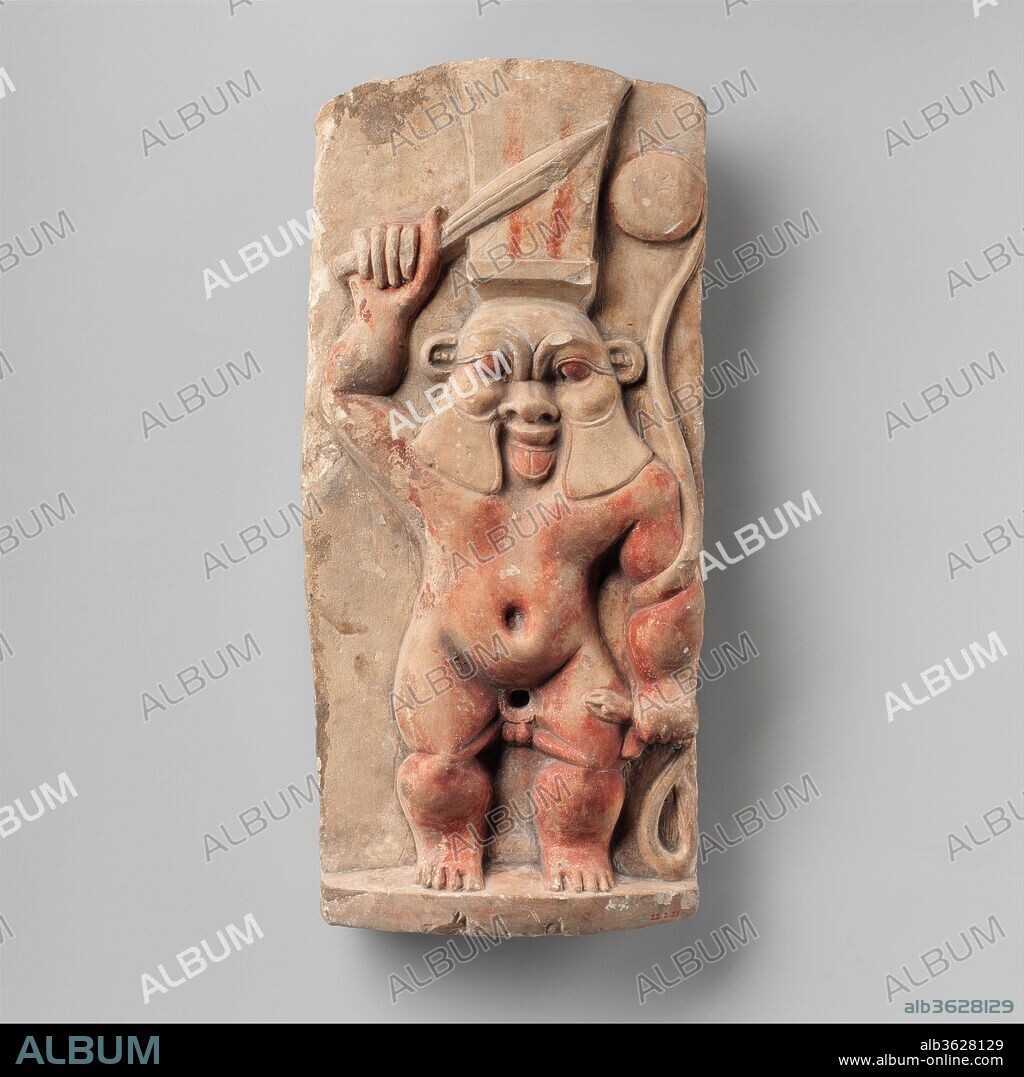alb3628129
Stela of the God Bes

|
Ajouter à une autre Lightbox |
|
Ajouter à une autre Lightbox |



Avez-vous déjà un compte? S'identifier
Vous n'avez pas de compte ? S'inscrire
Acheter cette image

Titre:
Stela of the God Bes
Légende:
Voir la traduction automatique
Stela of the God Bes. Dimensions: H. 38.7 cm (15 /14 in); w. 17.7 cm (6 15/16 in). Date: 4th century B.C.-A.D. 1st century.
Bes waves a knife in one hand and in the other grasps a snake, whose long tail curls up toward a round shape, probably the god's tambourine. A hole remains where a large erect phallus would have been inserted. Considerable traces of paint remain; the characteristic lines on the god's face and curls on his beard may have been added in paint.
A few limestone reliefs and terracottas of this type exist. One in Amsterdam comes from the "Bes Chambers" excavated in the Anubeion at Saqqara. The Bes chambers were decorated with large terracotta wall reliefs of Bes with a large phallus and accompanied by a smaller female figure. They are theorized to have been places where pilgrims came to stay and sleep in order to receive divinely inspired dreams, a practice known as "incubation," prophesizing fecundity. This relief could have functioned in such a place, or it could have had the same beneficial effect in a less specialized context.
Technique/matériel:
Limestone, paint
Période:
Ptolemaic or Roman Period
Musée:
Metropolitan Museum of Art, New York, USA
Crédit:
Album / Metropolitan Museum of Art, NY
Autorisations:
Modèle: Non - Propriété: Non
Questions sur les droits?
Questions sur les droits?
Taille de l'image:
3981 x 3982 px | 45.4 MB
Taille d'impression:
33.7 x 33.7 cm | 13.3 x 13.3 in (300 dpi)
Mots clés:
 Pinterest
Pinterest Twitter
Twitter Facebook
Facebook Copier le lien
Copier le lien Email
Email
